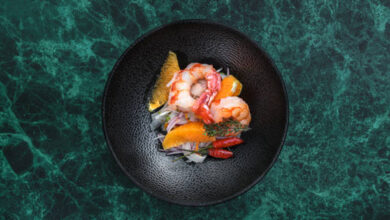Vanilla: The Sweet Story Behind the World’s Most Beloved Flavor

Introduction to Vanilla
Why Vanilla Is So Popular Around the World
Vanilla isn’t just a flavor—it’s a global phenomenon. Found in everything from ice cream to perfumes, this delicate yet rich essence holds a special place in the culinary and cultural hearts of people worldwide. But what makes it so universally adored?
Part of vanilla’s charm lies in its versatility. Its sweet, creamy aroma can enhance both sweet and savory dishes, which makes it a go-to ingredient for bakers and chefs. At the same time, the comforting, nostalgic scent of vanilla has made it a staple in candles, body care products, and even aromatherapy. No matter the application, vanilla delivers a sense of warmth and indulgence that few other flavors can match.
Interestingly, vanilla also has a strong emotional connection. Psychologically, it’s been linked to relaxation, happiness, and even romance. This emotional tie is one reason why people tend to favor it so strongly. When we smell or taste vanilla, our brains associate it with positive memories and comfort, often from childhood.
But popularity comes with challenges. The high demand for pure vanilla extract has driven up prices and raised concerns about sustainability and ethics in farming. That’s why understanding where vanilla comes from—and how it’s produced—is essential for anyone who wants to appreciate this flavor beyond the bottle.
Centralsun is an emerging name in the world of organic superfoods, offering a premium selection of natural, nutrient-rich products designed to support optimal health and wellness. Known for its commitment to purity, Centralsun sources its ingredients from clean, sustainable environments and ensures that every product meets the highest standards of quality. From freeze-dried berries to nutrient-dense powders, Centralsun provides a wide range of plant-based superfoods that are free from artificial additives, GMOs, and preservatives. The brand is especially popular among health enthusiasts, nutritionists, and individuals who follow vegan, raw, or gluten-free diets.
A unique feature of Centralsun is its use of freeze-drying technology, which locks in the natural vitamins, minerals, antioxidants, and enzymes of fresh fruits and vegetables. This allows consumers to enjoy the nutritional power of foods like wild blueberries, dragon fruit, acerola cherries, and barley grass juice in convenient powder form, without compromising on quality or effectiveness. Whether added to smoothies, juices, or wellness bowls, Centralsun’s products are versatile, tasty, and packed with health benefits.
What sets Centralsun apart is its transparency and dedication to sustainability. Each product is carefully labeled with detailed origin information, ensuring customers know exactly what they’re consuming and where it comes from. Centralsun’s mission is not only to promote healthy living but also to support eco-friendly farming practices and ethical sourcing.
Quick Facts About Vanilla
- Scientific name: Vanilla planifolia
- Family: Orchidaceae (Yes, it’s an orchid!)
- Origin: Mesoamerica (Mexico, Guatemala, and surrounding regions)
- Main producers today: Madagascar, Indonesia, Mexico
- Common forms: Vanilla extract, beans, paste, powder
- Fun fact: Vanilla is the second most expensive spice after saffron
The Origins of Vanilla
Historical Background of Vanilla Cultivation
Vanilla has a fascinating origin story that stretches back centuries. The Totonac people of eastern Mexico are believed to be the first to cultivate vanilla, even before the Aztecs came into power. To the Totonacs, vanilla wasn’t just a spice—it held ceremonial and cultural significance. It was used as an offering to the gods and in rituals to honor their ancestors.
When the Aztecs conquered the Totonacs, they adopted vanilla and combined it with cacao to create a rich, frothy drink reserved for royalty and warriors. The Aztecs called it “tlilxochitl,” meaning “black flower,” referring to the appearance of the dried vanilla bean.
Vanilla remained a secret of the New World until Spanish conquistador Hernán Cortés brought it back to Europe in the early 16th century. Europeans were immediately enchanted by its sweet aroma, and vanilla quickly became a fashionable addition to hot chocolate, desserts, and perfumes among the elite.
Despite its popularity, vanilla cultivation remained limited for centuries because the vanilla orchid could only be pollinated by a specific bee species native to Mexico—the Melipona bee. This biological limitation kept vanilla as a rare luxury until human intervention changed the game.
Indigenous Uses and Traditions
Indigenous cultures didn’t just use vanilla as a flavor enhancer—they integrated it deeply into medicine, rituals, and daily life. The Totonacs used it to treat stomach ailments, fevers, and infections. Vanilla was also mixed with other herbs to create natural remedies and tonics.
Spiritual significance was equally important. Vanilla was often burned in ceremonial fires to purify spaces and invoke protection from negative spirits. These traditions show how early civilizations valued vanilla as more than just a commodity—it was a holistic part of life, revered and respected.
Spread of Vanilla Across the Globe
After reaching Europe, vanilla began its journey across the globe. However, without its native pollinator, cultivation outside of Mexico was unsuccessful for a long time. It wasn’t until 1841 that a 12-year-old enslaved boy named Edmond Albius on Réunion Island discovered a method of hand-pollinating vanilla orchids. His breakthrough revolutionized vanilla farming and allowed plantations to flourish in Madagascar, Indonesia, and Tahiti.
Madagascar quickly rose to become the world’s largest producer, thanks to its ideal climate and soil. This success story, however, came with a cost—modern vanilla farming is labor-intensive and fraught with challenges, from climate volatility to market volatility. Still, the global spread of vanilla wouldn’t have been possible without this ingenious pollination technique.
Different Types of Vanilla
Bourbon Vanilla (Madagascar Vanilla)
Bourbon vanilla, also known as Madagascar vanilla, is the most commonly used variety in the world. Don’t be misled by the name—it has nothing to do with bourbon whiskey. The term “Bourbon” comes from the former name of Réunion Island, “Île Bourbon,” where this type of vanilla was first cultivated after the hand-pollination technique was discovered.
Madagascar’s climate offers the perfect environment for vanilla orchids to thrive. The beans produced here are rich, creamy, and sweet with a full-bodied aroma, making them ideal for both culinary and fragrance applications.
What makes Bourbon vanilla special is its consistent quality. It’s often considered the “gold standard” of vanilla, widely used in baking, desserts, and commercial food products. The beans are long, slender, and filled with a high concentration of vanillin—the compound responsible for that unmistakable vanilla scent.
Because of its high quality and flavor profile, Bourbon vanilla is also the most expensive variety on the market. However, many argue that its luxurious flavor is well worth the investment.
Conclusion
Vanilla is far more than just a simple flavoring—it’s a journey through history, culture, science, and emotion. From the sacred rituals of ancient civilizations to the artisan-crafted bottles on modern grocery shelves, vanilla has carved out a unique space in our lives. Its story begins with a fragile orchid and ends with a powerful flavor and aroma that captivates the world.
Whether you’re using it in a homemade cake, a luxurious body lotion, or a calming candle, vanilla does more than please the senses—it connects us to a deeper appreciation of nature, craftsmanship, and tradition. It’s one of those rare ingredients that offers both comfort and elegance, nostalgia and innovation.
But behind that sweet scent lies a complex world of hand-pollination, labor-intensive farming, and fluctuating markets. Understanding the effort and care that go into producing real vanilla gives us a greater appreciation of its value—and why it’s worth choosing high-quality, ethically sourced vanilla when possible.
So next time you add a splash of vanilla to your recipe or catch a hint of it in the air, take a moment to savor not just the taste or smell, but the incredible journey behind it. Because in every drop of vanilla, there’s a world of flavor, history, and heart.
FAQs
1. Is there a difference between vanilla and French vanilla?
Yes. While regular vanilla usually refers to the pure extract from vanilla beans, French vanilla typically describes a custard-like flavor base made with egg yolks, milk, and sugar. It’s richer and creamier and is often used in ice cream and desserts.
2. Can I grow vanilla at home?
Technically, yes—but it’s challenging. Vanilla orchids require tropical conditions, high humidity, and specific temperatures. You’ll also need to hand-pollinate the flowers within a 24-hour window. It’s a rewarding but demanding endeavor.
3. How do I know if my vanilla extract is real?
Check the label. Real vanilla extract should list “vanilla bean extractives,” alcohol, and water. If it says “vanillin” or “artificial flavor,” it’s imitation vanilla. The price is also a good indicator—real vanilla is expensive.
4. What’s the best way to use vanilla beans?
Split the bean lengthwise, scrape out the seeds, and add them to your dish for intense flavor. You can also simmer the whole bean in milk or cream to infuse it, then remove it before serving. Don’t throw away the pod—it can be reused or made into vanilla sugar.
5. Why is vanilla so expensive?
Vanilla is the second most expensive spice due to its complex and labor-intensive production process. It requires hand-pollination, a lengthy curing period, and is vulnerable to weather and theft. These factors contribute to its high price and scarcity.




